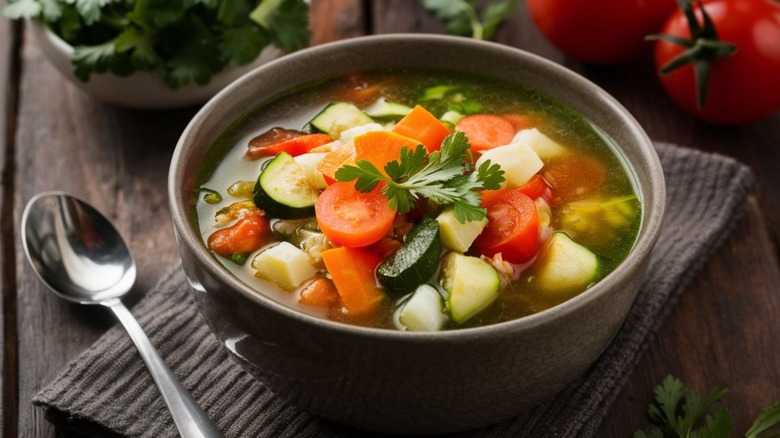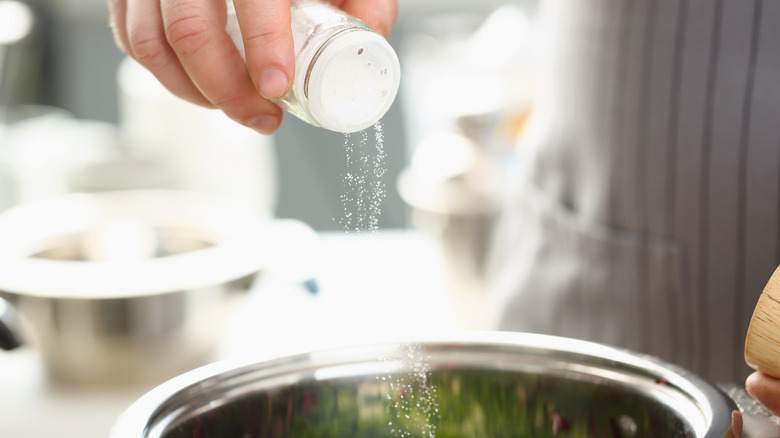The Clever Method For Fine-Tuning The Flavor Of Soup Without Ruining The Whole Batch
We've all been there — standing over a steaming pot of soup, wondering if it needs a few more herbs, a dash of pepper, or something else to give it an extra oomph. But one wrong move and the entire batch is over-seasoned or off-balance. Luckily, there's a simple ladle method that professional chefs and home cooks alike swear by to get it just right.
Here's how it works: Before adding any extra seasoning directly to the pot, scoop out a ladleful of soup into a separate bowl. Use this smaller portion to experiment with seasonings, whether it's a pinch of salt, a squeeze of lemon juice, or a sprinkle of spices. Taste-test and tweak until you achieve the desired result, then incorporate the adjustments for the whole pot. As professional chefs know, it's not just about the amount of seasoning, but also the timing of when it's applied. For example, adding salt to the soup at the beginning of cooking can draw out the vegetables' moisture, while adding salt at the end will harmonize the overall recipe.
This technique allows you to test bold changes without committing them to the entire batch — saving both your soup and your sanity. To make the most of it, always use clean utensils for each test (no double dipping!) to maintain hygiene, and take note of your adjustments to replicate them consistently. Mastering this method ensures that you are tasting with focus, without the risk of a cooking catastrophe. But seasoning is just one part of the equation.
Mastering soup seasoning like a pro
When it comes to fine-tuning soup, it's worth understanding the difference between taste and flavor. Taste comes from the basic sensations our taste buds detect — like saltiness, sourness, or savoriness. But flavor? That's the whole experience — taste plus aroma and texture, all coming together to create the overall vibe of a dish.
Each basic taste can play a specific role in your soup's flavor profile. Salt intensifies the natural character of ingredients — think how a pinch brings out the complexity of roasted butternut squash soup. Acidity, like a splash of lemon juice or vinegar, brightens heavy soups like creamy potato or chowder. And adding a touch of sweetness, such as a drizzle of honey or maple syrup, can balance the acidity in a tangy tomato soup or a spicy chili. Bitterness adds interest and layers; for instance, a few bitter kale leaves pair well with a hearty beef broth. And umami, the savory taste, gives fullness to soups like miso or those made with complex broths, bringing a satisfying, rounded profile.
Our taste receptors play a big part in how we perceive these flavors. They detect and send signals to your brain that help you decide what's missing or needs more balance. So season slowly, tasting as you go. Too much of one element — like an overuse of salt — can easily overwhelm the soup and mask the other tastes. You're looking to enhance flavors with seasoning rather than add new ones. With the ladle method, you can adjust elements step by step in a separate bowl. By mastering this technique, you'll take your soups to restaurant-quality status, every time.

